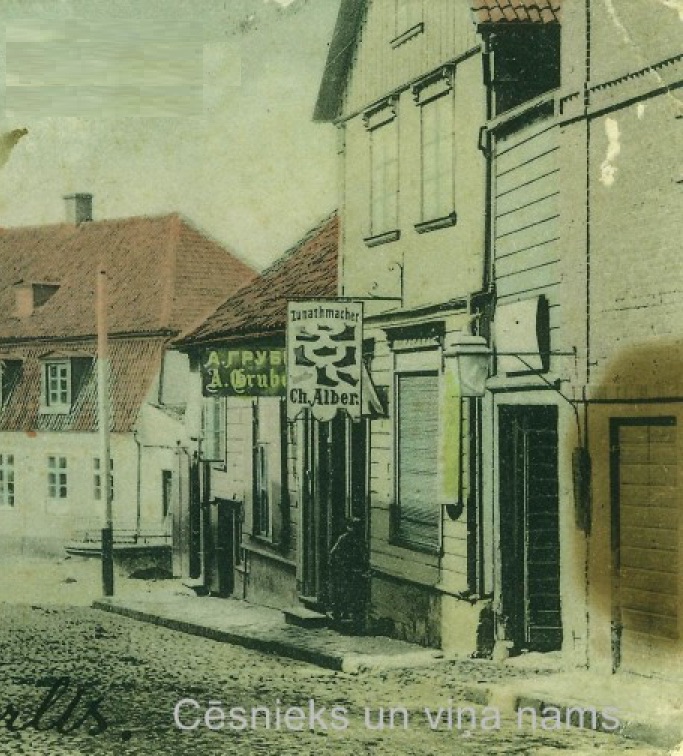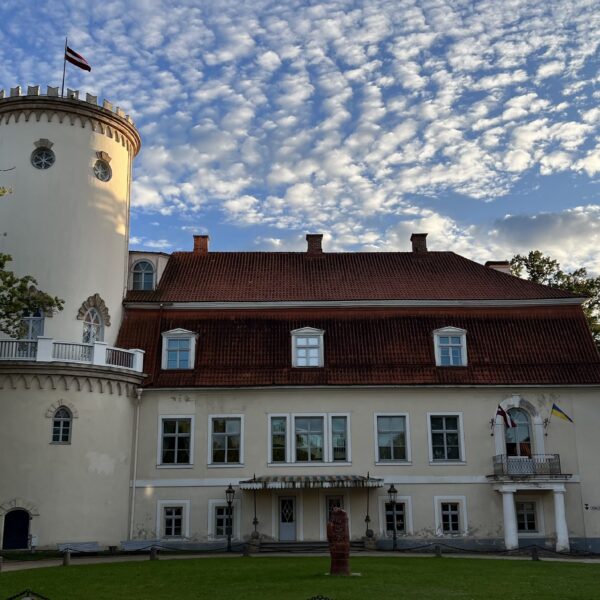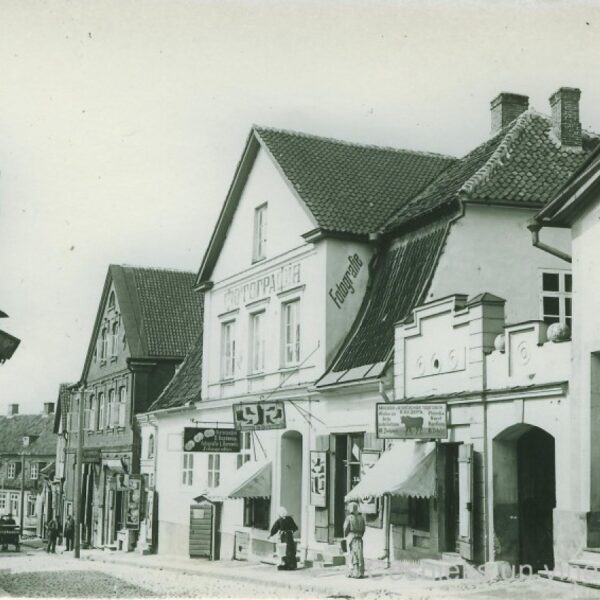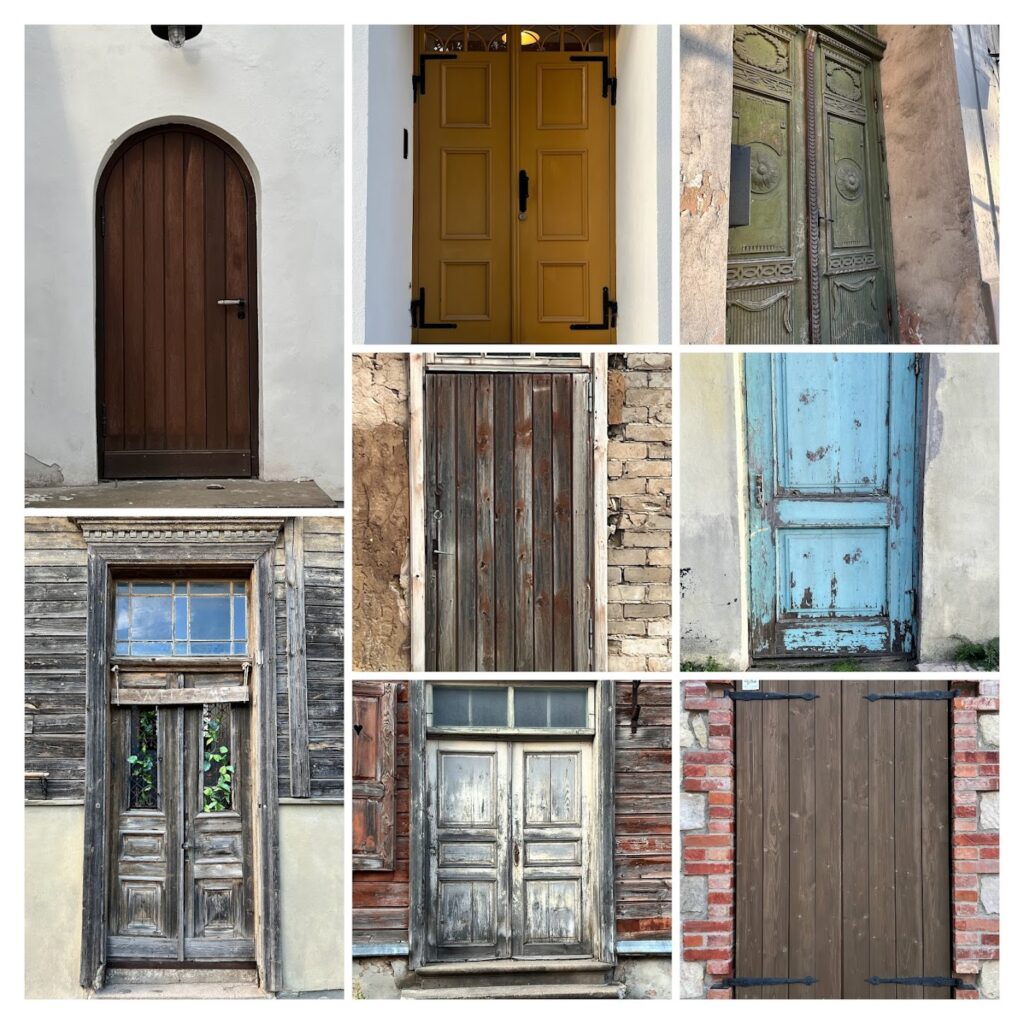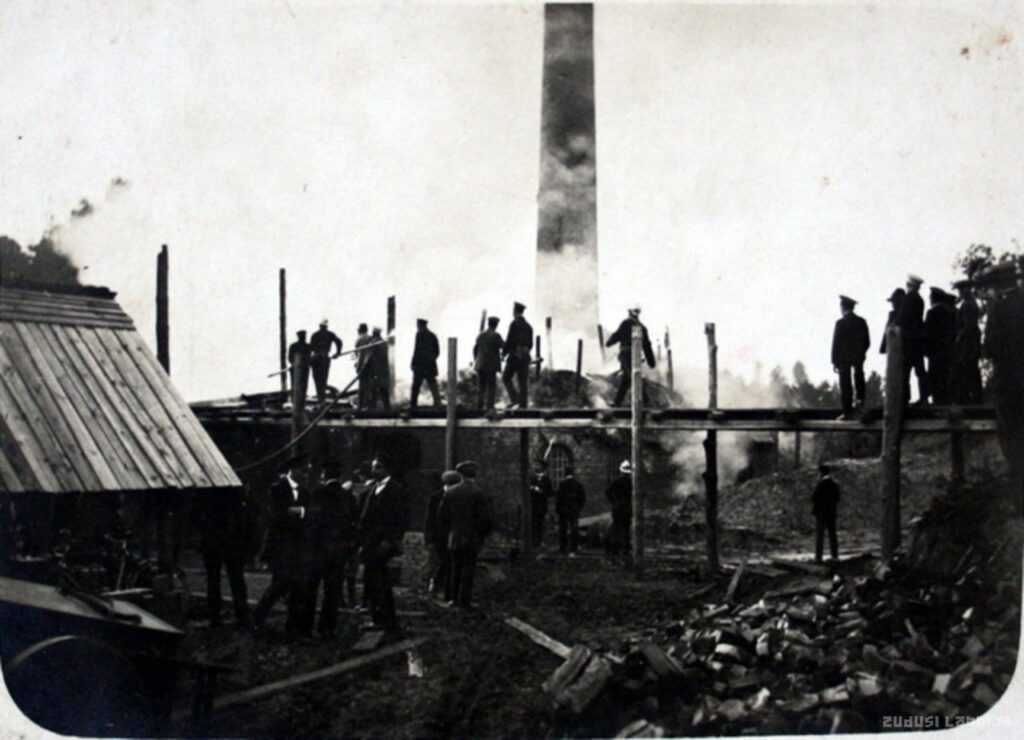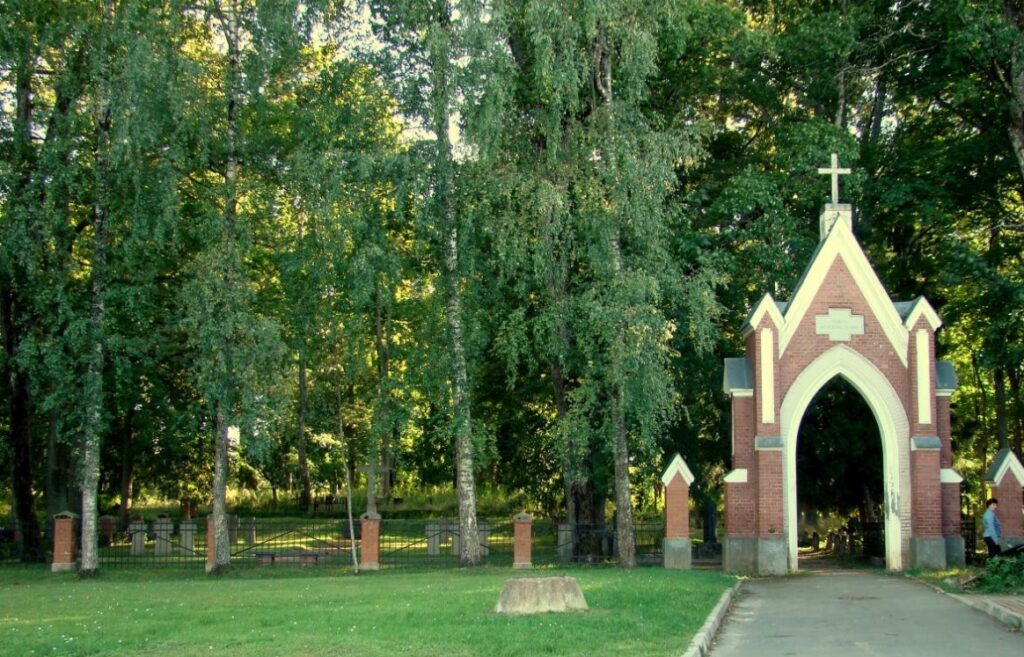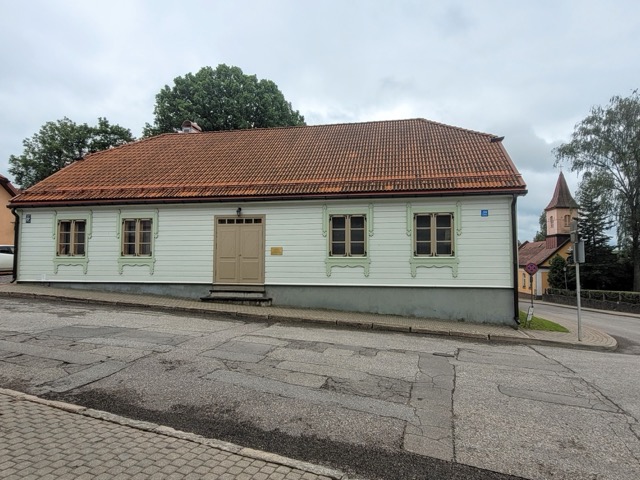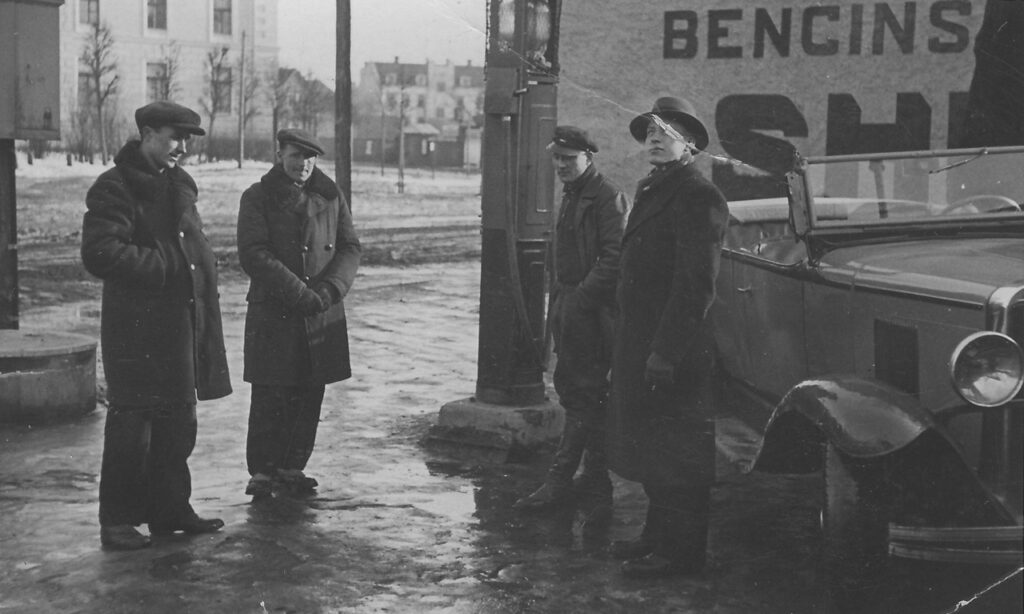The house at 40 Rīgas Street, known in history as Faber’s House, occupies an important place in the history of Cesis, but with an interesting twist – it turns out that the building, long known as Faber’s House, was not actually the real house of Kārlis Faber! Although tourist guides list it as the place where Johann Köhler, later known as the founder of Estonian national painting, lived and worked from 1839 to 1846, archival documents reveal that the real house of his master, Karl Faber, was located on the corner of Lielā Līvu and Mazā Katrīna Streets. Unfortunately, this building was destroyed during the Second World War in September 1944. It is possible that only Faber’s workshop was located at 40 Rīgas Street.
40 Rīgas iela has a rich commercial history. 20. In the 1920s and 1930s, it was a bustling commercial centre, with shoe workshops, knitting mills, a tailor and other businesses. 1930. In 1927, Kristīne Mazīte’s tearoom was closed, and one of the longest tenants was V. Aleksejevs with his grocery shop and bakery, which operated from 1927 to 1934. His advertisements in “Cesis Newspaper” were as vivid as his business: “Not empty advertising – but a fact. Why do I sell so cheap? It’s simple: I buy my goods in bulk direct from the source”, or the bold statement “the crisis is over”, because in his shop rye bread cost only 6 cents a pound.
No less important was M. Radziņš’s electrical and radio shop, which operated in this building from 1927 to 1930. The entrepreneur boasted that his shop was “the only one in Cesis” where radio receivers and loudspeakers were made. His technical talent was also recognised: one of the devices he designed won first prize in a competition organised by Philips. 1930. In 2007, Radziņš moved to a more prestigious location – 4 Rīgas Street.
During the Second World War and in the post-war years, the building’s function changed. 1941. In the spring of 2009, the photographer R. Zaķis, one of the few who were allowed by the Soviet authorities to take passport photographs, worked here. After the war, the building was used as a special shop for the Cēsis Consumers’ Association “Spectorgs”, where employees could buy detergents, state vodka and papiros.
The building was also home to the prominent Latvian writer and journalist Melanija Vanaga (1905-1997), who lived with the owner Mrs Rišová during her school years, before graduating from Cēsis Secondary School (then M. Neija Gymnasium for Women) in 1925.
The materials used for the description are:
Dace Cepurīte, Mg. hist., Research “Cēsnieks un jeho nams”
Collections of the Cesis Castle Museum.

